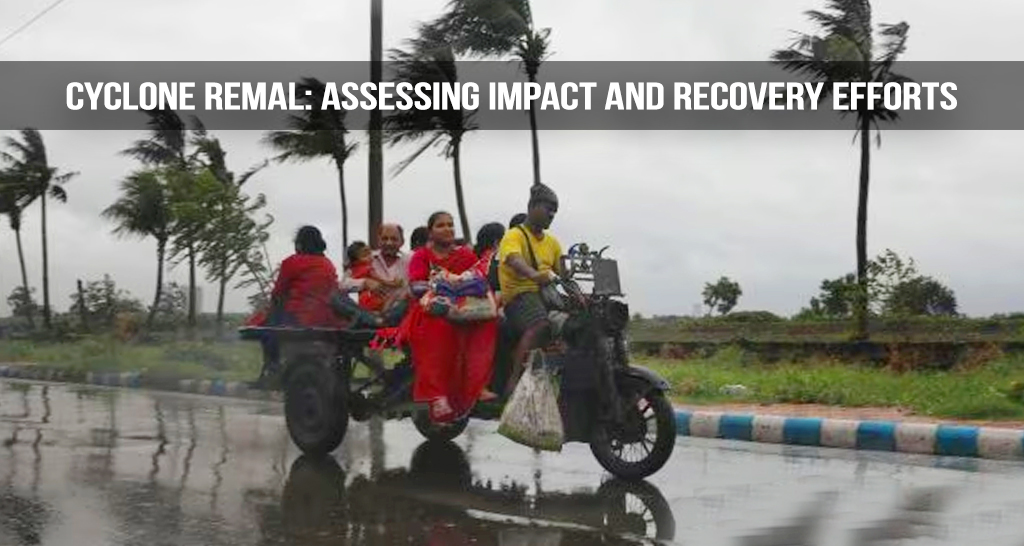Cyclone Remal, a powerful severe cyclonic storm, hit the coastal areas of West Bengal and Bangladesh on Sunday, May 26, 2024. The storm had strong winds blowing at 110-120 km/h, with gusts reaching up to 135 km/h, bringing heavy rain. This caused major disruptions and forced many people to evacuate.
Evacuations and Immediate Response
Before Cyclone Remal hit, approximately 110,000 residents from high-risk regions such as Sagar Island, the Sunderbans, and Kakdwip were evacuated. These measures were part of a coordinated effort to minimize the potential human loss and infrastructural damage. The India Meteorological Department (IMD) had issued severe weather warnings, predicting heavy rainfall across several West Bengal districts, including South and North 24 Parganas, Purba Medinipur, Kolkata, Howrah, and Hooghly. Furthermore, the northeast regions of India were also forecasted to have heavy rainfall on May 27 and 28.
Impact on Infrastructure and Transport
The impact of Cyclone Remal extended beyond just rainfall and wind damage. Critical infrastructure and transport systems were significantly affected. Kolkata airport suspended flight operations for 21 hours beginning from Sunday noon—this decision was aimed at ensuring the safety of passengers and airport staff. Similarly, the Syama Prasad Mookerjee Port also stopped all cargo and container handling operations for 12 hours from Sunday evening, reflecting the severe nature of the storm. Rail operations in the port area were also paused during this time.
Preparedness and Relief Efforts
The state and national disaster response teams quickly stepped in to help with evacuations and provide relief. Sixteen battalions from the state disaster management force and the National Disaster Response Forces were sent to the coastal regions to move people to safety and manage relief operations. These teams played a crucial role in ensuring evacuations went smoothly and that people got the help they needed. A 24/7 control room was set up at the state secretariat in Kolkata to monitor the situation in the coastal districts. This control room was the main central hub for coordinating the response efforts and quickly sharing vital information. Helpline numbers were given to the public to provide assistance and updates regarding the storm.
Environmental and Economic Impact
Cyclone Remal caused extensive environmental damage, with heavy rainfall and strong winds. Widespread flooding damaged crops, homes, and infrastructure. The agricultural sector, in particular, faced significant threats as fields flooded, leading to potential losses for farmers. The storm surge and flooding also threatened coastal ecosystems, including the fragile mangroves of the Sundarbans.
Economically, the cyclone disrupted transport and industrial operations. The suspension of activities at the Kolkata airport and the Syama Prasad Mookerjee Port affected trade and commerce. Many Businesses in the affected regions had to close and faced potential losses, adding to the economic difficulties caused by the cyclone.
Community and Social Response
Despite the challenges, the community showed remarkable resilience and solidarity. Local volunteers and non-governmental organizations (NGOs) were vital in supporting evacuation efforts and providing relief materials to those in need. Temporary shelters were set up to accommodate evacuees, ensuring they had access to food, water, and medical care.
The combined efforts of the government, disaster response teams, and community organizations highlighted the importance of preparedness and coordinated response in the face of natural disasters. These quick actions helped reduce the damage from Cyclone Remal, showing the need for ongoing investment in disaster management infrastructure and community awareness programs.
Looking Ahead
As the immediate effects of Cyclone Remal are assessed, recovery efforts are beginning. There is a growing recognition of the need for long-term strategies. These strategies are essential to enhance resilience against such natural disasters. Strengthening infrastructure is a crucial aspect of enhancing resilience against natural disasters. Improving early warning systems is another vital step in preparedness efforts. Promoting sustainable development practices can also significantly reduce vulnerability to cyclones and other extreme weather events. Cyclone Remal’s impact is a clear reminder of the challenges presented by natural disasters and the ongoing need for vigilance, preparedness, and community support to lessen their effects.

